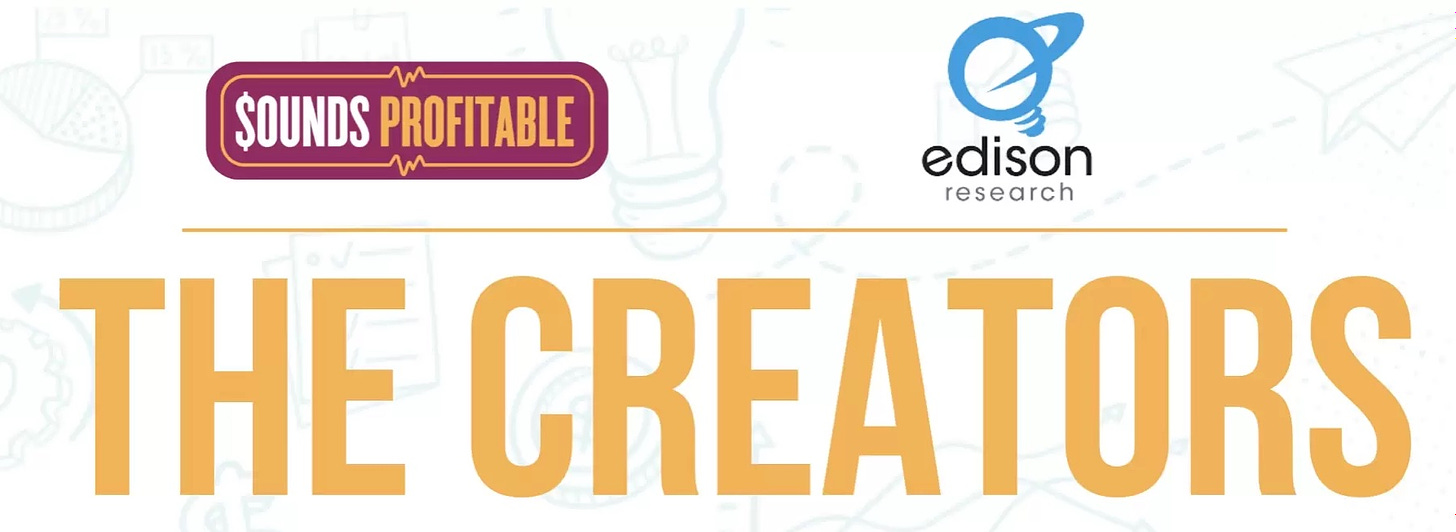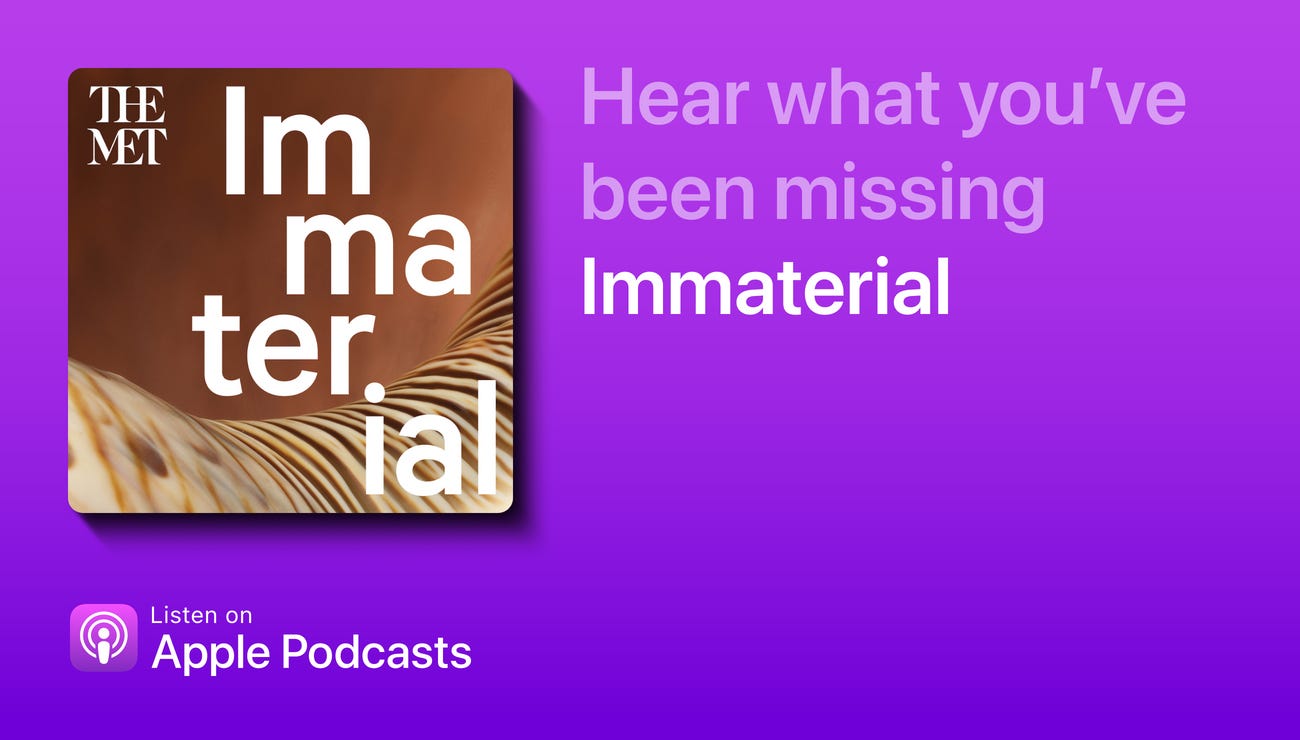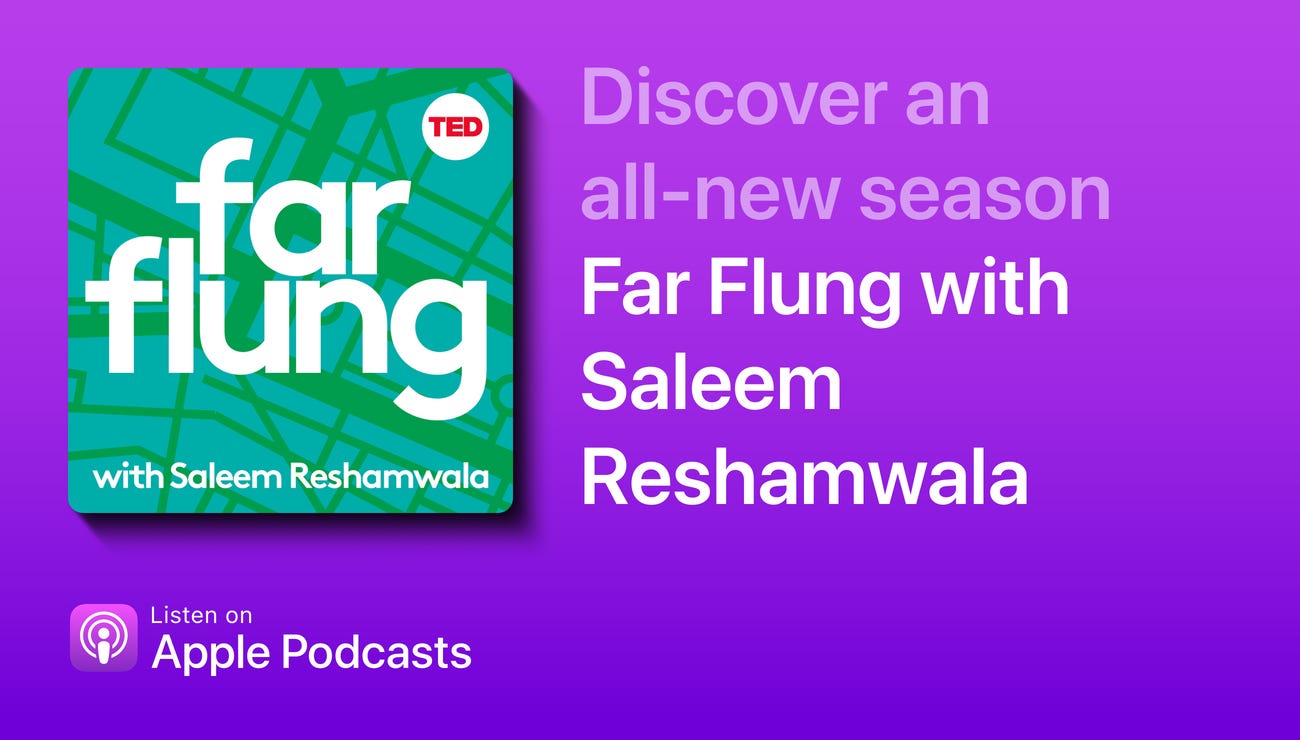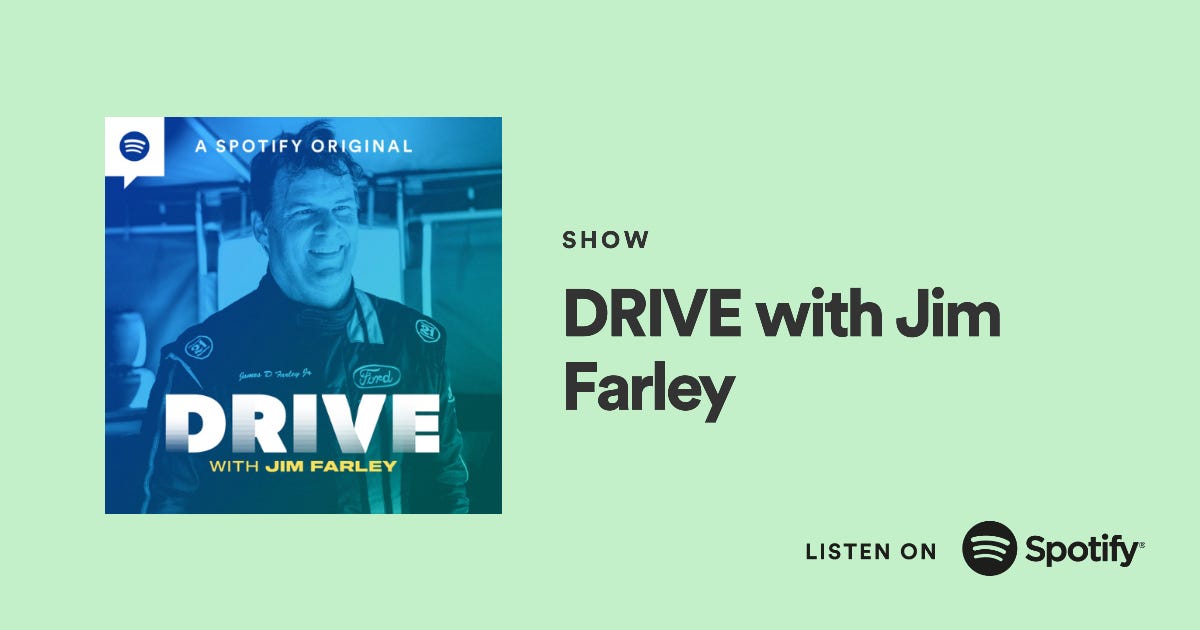If You Think Technology Will Solve Your Problems, Then You Don’t Understand Technology And You Don’t Understand Your Problems
A few shorter items that look at places where we find a lot of light, often without a lot of heat. Plus, we have some new shows!!
Welcome to Dispatch #26 of The Audio Insurgent.
A few weeks ago, when I dropped the last dispatch of The Audio Insurgent, it might have appeared to be a big week in my world. I published a 3,500 word piece on the future of NPR’s All Things Considered, a 3,000 word newsletter dispatch, and launched a new season of one of our shows with TED–all within one 24-hour period. That seems like a lot, and it was, but it’s also a bit deceptive. It was just a weird collision of publication for three things I’ve been working on for a long time.
Regardless, I’m kind of burned out on big things–even scrolling through the last dispatch made me fatigued. So this dispatch will be a collection of shorter fatigue-proof items that have been rolling around my brain lately. Plus, we have some great new shows out in the world that I want to tell you about!
The title of this dispatch comes from the photo above, which I took this weekend when my wife and I snuck down to see the Laurie Anderson retrospective entitled The Weather at the Hirshhorn Museum in Washington, D.C.
I can tell you the exact place I was when I first heard “O Superman” played on WAUP, our local “college music” station. I was driving up Logan Avenue in Canton, Ohio, having just got my driver’s license. It became the soundtrack for one of the first times I was allowed to drive alone at night. Still, whenever I hear that song, I think about driving at night. Another indication of the power of radio: that single broadcast turned me into a lifelong superfan.
Decades later, I’m still blown away by Laurie Anderson and learn from her every time I experience her art. (I even have a story about spending a morning with her at her studio talking about podcasting and radio that I’ll save for another day.) Since I first saw the phrase above, I keep applying it to so many things in my life…and to my profession.
To be honest, it really doesn’t apply–directly–to anything in this dispatch, which was largely finished before I saw the exhibit. But it equally applies to–everything–to some degree, as well as the approach we all should take to our work.
Four small items below. So let’s get started…
[FIRST SMALL THING: PODCAST ADVERTISEMENTS]
First off, I’m glad we as a society have finally moved beyond the “what’s a podcast?” conversations, but count me on the skeptical side regarding a lot of podcast advertising.
“Skeptic” may be too strong of a word. It’s more like I don’t understand the objectives.
Recently Podnews has been running a recurring item, showcasing podcast advertising in the real world. Each photo of a billboard, poster on a phone booth or the side of a bus, or a colorful digital ad in Times Square is accompanied by the phrase “Advertising for podcasts help grow the whole medium.” That statement both gets the point and misses it at the same time.
First, let's distinguish between analog advertising and digital advertising. Analog advertising is display ads that you can’t directly interact with. Unlike a digital display ad in a mobile ad or web page, there is no clickable link on the side of a bus, an ad in a magazine, or a billboard. You can’t track how many people really saw it, even if they ignored it. Therefore, it is hard to measure their effectiveness. I often hear people talking about the objective of these analog advertisements as “awareness.” As in, “Hey, let’s go to a movie tonight, what’s playing?” [Advertising-driven awareness kicks in.] “Oh, how about that new movie with Helen Mirren?” “I saw something about that, too, let’s see that.”
For years, commercial radio bought tons of analog display ads. The point of them? To drive recall of the radio station when filling out your Arbitron (now Nielsen) listening diary. And once Nielsen switched to meter-based measurement, most of that advertising disappeared. The advertising wasn’t to get you to listen, it was to get you to remember that you already listened. Awareness.
Second, circling back to objectives, what is the point of advertising a podcast? Is it to get people to listen? Let’s pause for a moment to distinguish correlation from causation. If Disney spends $100 million dollars in advertising before the debut of a new Pixar movie, and the movie opens at #1 that weekend, that is a correlation. Two things happened at the same time. If you asked the marketers what worked and what didn’t, they may be very hard pressed to answer that, because all they know is that they spent a pile of money and the movie did well. Something worked. Because it did well, the launch campaign had to have been effective, right. Well…again, that is just a correlation.
That doesn’t rule out causation (Action A directly caused Event B), but it doesn’t prove it either.
A question that doesn’t get asked enough, generally in life, is “How do you know that?”
Cross-promos worked? How do you know that?
Twitter does/doesn’t drive listening? How do you know that?
Advertising grows the industry? How do you know that?
That isn’t meant to be confrontational nor put someone in a defensive position. I just find the answer to “How do you know that?” to be really fascinating, sometimes challenging to my assumptions, and a teachable moment. The REAL lesson is in the details of “knowing.”
And like many things, the success lies more in the execution than with the general tactic itself. Whenever I hear someone say, “ I tried this and it doesn’t work,” what I hear is, “I tried it once, one way, and it didn’t work the way I did it.”
All that said, I am not aware of anyone who is able to point to a podcast ad in the analog/traditional media (outdoor, print, bus stop bench, newspaper ad, etc) that drove any measurable podcast listening. Not even a corollary bump in listening, let alone a causation. If someone has an example of this actually working, I’m all ears. I’d love to know about it.
The ad above is when I, myself, learned this lesson the hard way. At Audible, we decided to do an experiment by buying out an entire transit stop–Rockefeller Plaza–for a couple weeks to see how much listening it generated. Let’s just say that given the results, we never did anything like that again. Sure, it could have been the way we did it, what the ads said, and so on…but this wasn’t the only thing we tried.
So, objectives again. When you see an ad for a big podcast advertisement in Times Square, along the freeway in LA, or any less-flashy version of an analog advertisement, what is the objective of that? Is it to promote a podcast?
If so, was it effective? How do we know that?
Or perhaps it was to promote the platform offering it. Was that effective?
And please, creators, when signing deals to distribute podcasts, make sure you include language in your contract that makes sure these large marketing expenses aren’t charged against the P&L of your show. I think experimentation and risk-taking is great, but you shouldn’t be on the hook for the expense unless someone is willing to prove that it benefitted you.
[SECOND SMALL THING: YOU ARE NOT YOUR AUDIENCE]
A few weeks ago, the budding team at Sounds Profitable released a report called The Creators that justifiably generated a lot of buzz. It profiles the podcasting creator community. It is a terrific read and well worth an hour (probably less) to read through and take it in. It is a really smart thing to do, as the industry has spent so much time trying to understand the growing audience, that no one has really turned the mirror around to ask who is making all this stuff.
The study demonstrated one thing that I think is worth remarking on here. It’s another proof point for the mantra I’ve been trying to remind myself and my colleagues of since I started in radio: you and your audience are not the same people.
When I was in my 20s working at a radio station, our Program Director had us do an occasional exercise that I still do with every partner Magnificent Noise works with, every consulting client we have, and every crew of producers that works on the shows. That PD would have us go to newspapers and magazines (okay, I was in my 20s…awhile ago–today we have everyone grab a photo at Google Images), and clip out pictures of people we thought would listen to our station. We’d share them, make up fake bios, and debate them as a group. Afterwards, we were told to hang our listener avatar pictures up in our workspace. Whenever we made a decision on behalf of “the audience,” or wrote a piece of copy, or tried to figure out how to describe something, we were to turn to our picture and ask ourselves, “What do they want?” or “What do they need to know about this?” Or “What would they find interesting?”
The point was to get out of our own heads. Stop thinking about what I thought, understood, or found interesting and focus on the listener's needs.
There was also a more subtle point to this exercise: there is a difference between you and the audience. You may share some interests or beliefs, but you are not the proxy for them. Your preferences, interest level, and approach are not the same as those who listen.
In reading through The Creators, you see lots of evidence of this. Podcast creators are younger and more diverse than the U. S. population (and yes, podcasting is becoming ubiquitous enough that it is now pretty okay to compare creators to the general population). Creators are more likely to identify as men, more likely to be Democrats, and more active on social media–among many other points. In fact, when you look across all the data, it is really striking all the differences you see and how few commonalities. And even though most podcasts (and all successful podcasts) are not speaking to a general audience, it is a safe assumption that there are differences even with your nichey audience and the nichey people making your podcast (including you).
You share something with your audience–it can range from the love of a certain hobby or kind of storytelling to a world-view or sense of humor. But you are not them. The clearest example of this is that many podcasts feature a host who is an expert. The audience may love the subject or story, but they aren’t the experts. The audience is listening because they want to hear the expertise, world-view, or information you have to share.
If you want your podcast to serve them, you need to keep that difference in mind, all the time, in everything you do. Are you explaining things the right way? Are you giving enough context? Too much? Do you need to remind them who these people are and why they should care?
Richard Kramer, one of the hosts of our Bubble Trouble podcast, points out that a common mistake at companies is that they extrapolate their lifestyle, interests, and resources onto their potential customers: “I’m willing to spend $2,000 on an exercise bike, plus $30 a month for a content subscription…so EVERYONE must be able and wanting to do that.” “I can have every meal delivered to my home, so EVERYONE must want all their meals delivered.” That kind of applies here.
You are special, but your audience is more special.
Because they are different–or at a different point in their journey or understanding or interest–the more a creator keeps that in mind, the more likely they are to produce something that will resonate. The more you orient your podcast away from yourself and towards them, the more of them will listen.
[THIRD SMALL THING: NEW DOPE PODCASTS]
So one of the reasons I’ve had a quiet spring and early summer has been our production calendar–it’s had some incredibly big productions all wrapping at the same time. And they are all really interesting shows that you should check out if you haven’t yet.
And while it isn’t new…as we wind up the first season of This is Dating, it was really gratifying to see it included in TIME’s list of the best podcasts of 2022 as well as Vox’s similar list.
So…the new shows…
The first new show to share is Immaterial from The Metropolitan Museum of Art.
Immaterial is probably the best podcast that you haven’t heard of. Each episode tells the story of a single material commonly used in making art and learning what the material itself can tell us. This season we look at materials like concrete, paper, jade, shells, clay, linen, and a two-parter (!) on metals. We first started talking about collaborating with The Met right before the pandemic and we all are so excited to share it with the world.
We pulled out all the stops for this show: it features tape recorded in 14 countries on 6 continents (the art scene in Antarctica isn’t what we might secretly hope) and represents 17 different departments in The Met.
People who have heard it keep coming back to the sound of the show–the episodes sound like the material they represent. An example of the typical Magnificent Noise fussiness is, in an interview with renowned concrete artist Doris Salcedo, she mentioned getting inspiration from the construction in her native Bogotá. So we hired a recordist in Bogotá to capture construction sounds. It’s a little detail, but thinking about little details is what makes good work good.
Next, Season 2 of Far Flung with Saleem Reshamwala is rolling out now and, like the first season, it features a collection of “Huh, I have never heard that but it’s fascinating” stories of places around the globe and the transferable ideas we can learn from them. This season starts with a story of the unbelievably high suspension bridges connecting mountain towns in Nepal, then tells nine other stories like how artists create “spatial justice” in Chicago, the fight to save culture and language in Iceland, and a real banger (also a collaboration with Kerning Cultures) about an effort to save musical heritage in Somalia by literally burying cassette tapes in the ground for years.
Like Immaterial, Far Flung was a global effort. Recording in nine countries using twenty international producers and collaborators, in 11 languages. I often say that Far Flung is the most operationally complex podcast I’ve ever heard of, let alone worked on. And I think the results are pretty singular.
And finally, we also launched Drive with Jim Farley, the CEO of Ford, which we produced for Spotify. Everyone’s first impression of this project is that they assume it is sponsored content–and it isn’t. Jim is just a really interesting and unusual guy to be a CEO. Few things are more terrifying than taking on a project with a CEO as host–they have very, very, very tight schedules, and let’s be frank, they are generally used to telling people what to do rather than taking guidance and feedback. But from our first conversation, Jim was different. So, yes, his schedule is bonkers, but he really wanted to learn, and approached the whole project with a sense of curiosity and humility that we found, honestly, inspiring. It was a very different type of project for us, but we loved doing it and are so proud of Jim and what we created together.
[LAST SMALL THING: NO, I DON’T HATE EXCLUSIVE CONTENT]
I gave an interview about podcasting to a newsletter a few weeks ago and towards the end of the conversation, the person asking me questions semi-sheepishly said, “I want to ask you why you hate exclusive content deals for podcasts so much.”
I said that I didn’t hate them and don’t recall ever saying that.
They said, “Well, you’ve spoken out against them in the past…”
That’s truer.
I told them that I’ve questioned the value exclusive content deals have for creators and cautioned against the false choice between reach versus revenue. And in that dispatch, I did kinda blame the platforms for constructing those creator-unfriendly schemes.
But in the time since, I’ve come to a slightly different conclusion: the current schemes for exclusive content deals fail everyone, including creators, networks, listeners, and everyone else who touches them. I don’t hate them, I just don’t understand how they benefit anyone involved, including those writing the big checks.
Just for the record, because in a fast-changing industry terms can mean different things to different folks, when I say “exclusive content”--I mean where creators strike a deal to only allow their program to be heard in one app or on one platform. If listeners want to hear it, they need to become customers/users/subscribers to that app or platform. It’s worth acknowledging that exclusive content deals have been a fixture of media for about as long as there has been media–and there are many success stories. But not when it comes to podcasting.
Instead of actual success, these deals create things that are the illusion of success: like press release stenography-like press hits and ephemeral ticks up in stock price. These things tend to come at the announcement of a deal…but how often does the product created generate the same buzz? I’m pretty sure the answer is…pretty much never. And sometimes the actual buzz-generating content never even comes. Podnews has chronicled some examples of these big announcements sans series in the past, but this issue certainly isn’t confined to one company.
These announcements generate a lot of light, but not a lot of heat.
So, this is still good for the acquiring companies, right? Well, if you are tracking stock prices after one of these announcements, sure. But long term? No. Sometimes millions and millions spent–and nowhere near that kind of value generated.
I want to be clear. I’m not saying exclusive content is a bad idea that will never be successful–just that the schemes podcasting has for them now really aren’t working. There are other approaches to exclusivity that may work better, and I hope people will accept where things are and try new ideas.
What drives real success? Listening. Consumption. Actual people listening to actual content. Every business driver, KPI, or meaningful change to a business requires creating something that drives real listening. The rest is a sugar rush.
So, I don’t hate exclusive content deals. I hate when things don’t work. And I think that there is a way to make exclusive content deals work in podcasting, but no company has really cracked it yet. The first step towards success is to just say the honest thing out loud.
[TODAY’S LAST THING: WORTH THE CLICK]
So, I said I would have small things today, and really NOTHING was all that short. In fact, today’s dispatch ended up being more than 300 words LONGER than the last one, somehow. I probably should have made this several smaller dispatches and put them out earlier. Note for next time.
Here is one actual short thing.
Arielle Nissenblatt has been dropping some incredible Twitter threads lately on podcast audience development and marketing. Just amazing. Clear. Transferable. Inspiring wisdom that anyone can implement, from the smallest indie podcasters to lessons major distributors should learn too. Examples include this thread on how to spend marketing $ on podcasts and this thread using social to promote your podcast. There are others and she keeps putting them out. If you aren’t following her, do so. If you disabled your Twitter account because social media is a rotting cesspool of the worst humanity has to offer, reactivate it just to follow her.
Okay, that’s it for today.
That Laurie Anderson exhibit? It closes this weekend. So…hurry.
If you enjoyed this dispatch, would you mind telling someone about it?
If this was forwarded to you or you read this online, would you mind subscribing?
And while this is free, you are also always welcome to buy my book or (even better) buy me a beer.
Make great things. I’ll be listening.
--Eric









